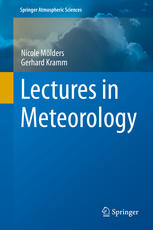

Most ebook files are in PDF format, so you can easily read them using various software such as Foxit Reader or directly on the Google Chrome browser.
Some ebook files are released by publishers in other formats such as .awz, .mobi, .epub, .fb2, etc. You may need to install specific software to read these formats on mobile/PC, such as Calibre.
Please read the tutorial at this link: https://ebookbell.com/faq
We offer FREE conversion to the popular formats you request; however, this may take some time. Therefore, right after payment, please email us, and we will try to provide the service as quickly as possible.
For some exceptional file formats or broken links (if any), please refrain from opening any disputes. Instead, email us first, and we will try to assist within a maximum of 6 hours.
EbookBell Team

4.1
10 reviewsLectures in Meteorology is a comprehensive reference book for meteorologists and environmental scientists to look up material on the thermodynamics, dynamics and chemistry of the troposphere. The lectures demonstrate how to derive/develop equations – an essential tool for model development. All chapters present applications of the material including numerical models. The lectures are written in modular form, i.e. they can be used at the undergraduate level for classes covered by the chapters or at the graduate level as a comprehensive, intensive course. The student/instructor can address chapters 2 (thermodynamics) and 4 (radiation) in any order. They can also switch the order of chapter 5 (chemistry) and 6 (dynamics). Chapter 7 (climatology and climate) requires an understanding of all chapters. Chapter 3 (cloud physics) needs basics from chapter 2 to understand the cloud microphysical processes. The governing conservation equations for trace constituents, dry air, water substances, total mass, energy, entropy and momentum are presented, including simplifications and their application in models. A brief introduction to atmospheric boundary layer processes is presented as well. Basic principles of climatology discussed include analysis methods, atmospheric waves and their analytical solutions, tropical and extra-tropical cyclones, classical and non-classical mesoscale circulations, and the global circulation. The atmospheric chemistry section encompasses photolytic and gas-phase processes, aqueous chemistry, aerosol processes, fundamentals of biogeochemical cycles and the ozone layer. Solar and terrestrial radiation; major absorber; radiation balance; radiative equilibrium; radiative-convective equilibrium; and basics of molecular, aerosol and cloud adsorption and scattering and their use in remote sensing are also presented.